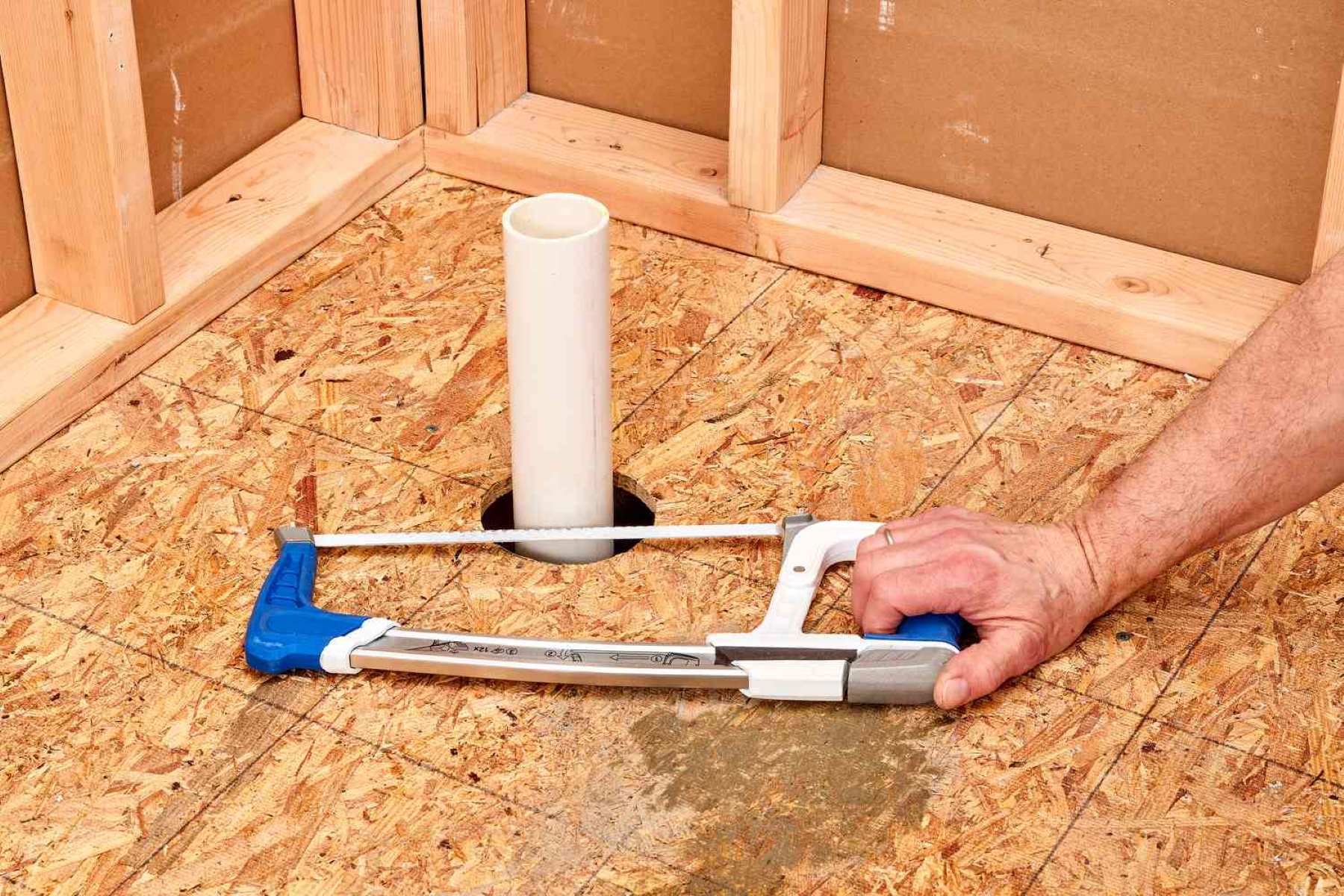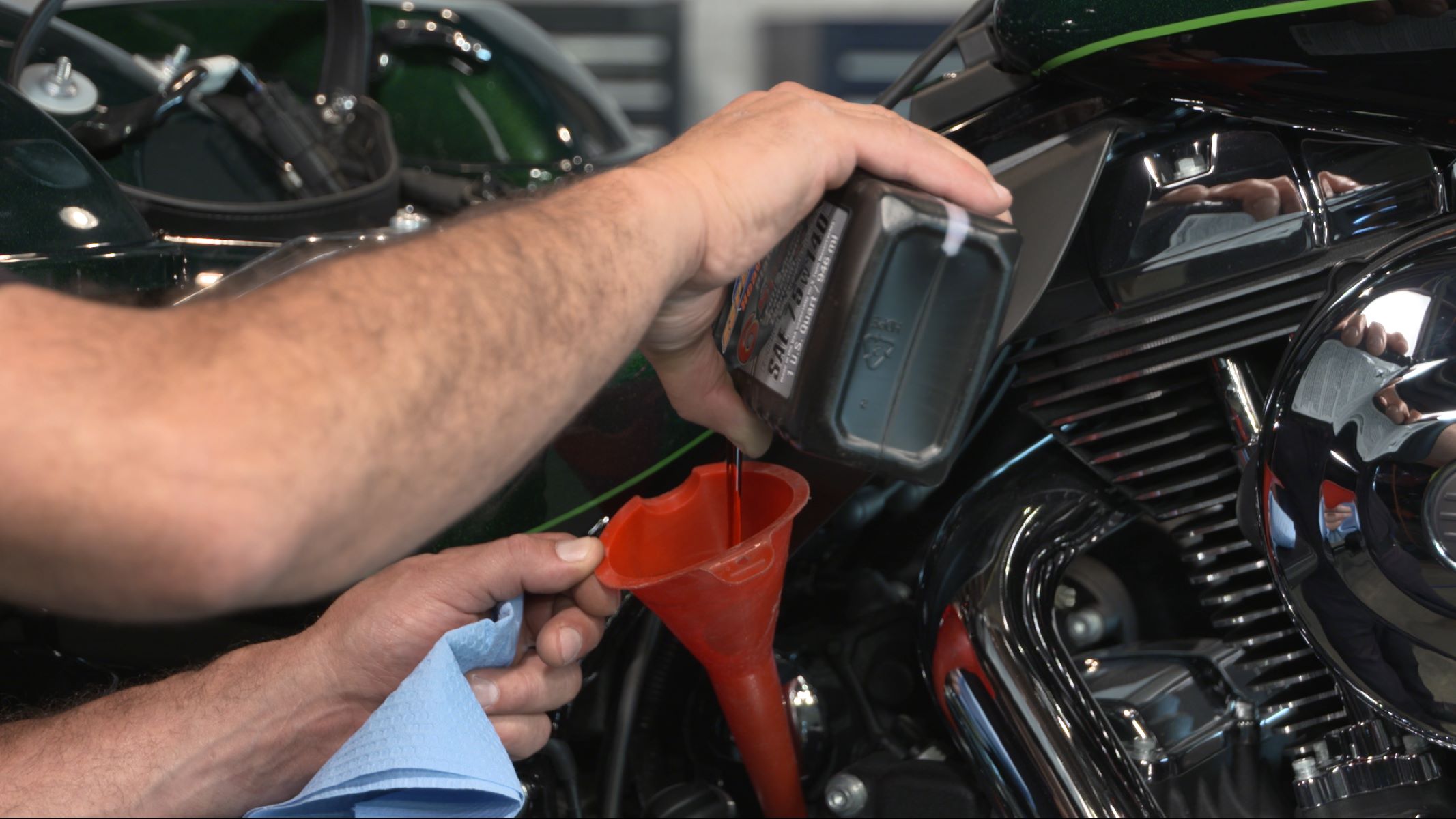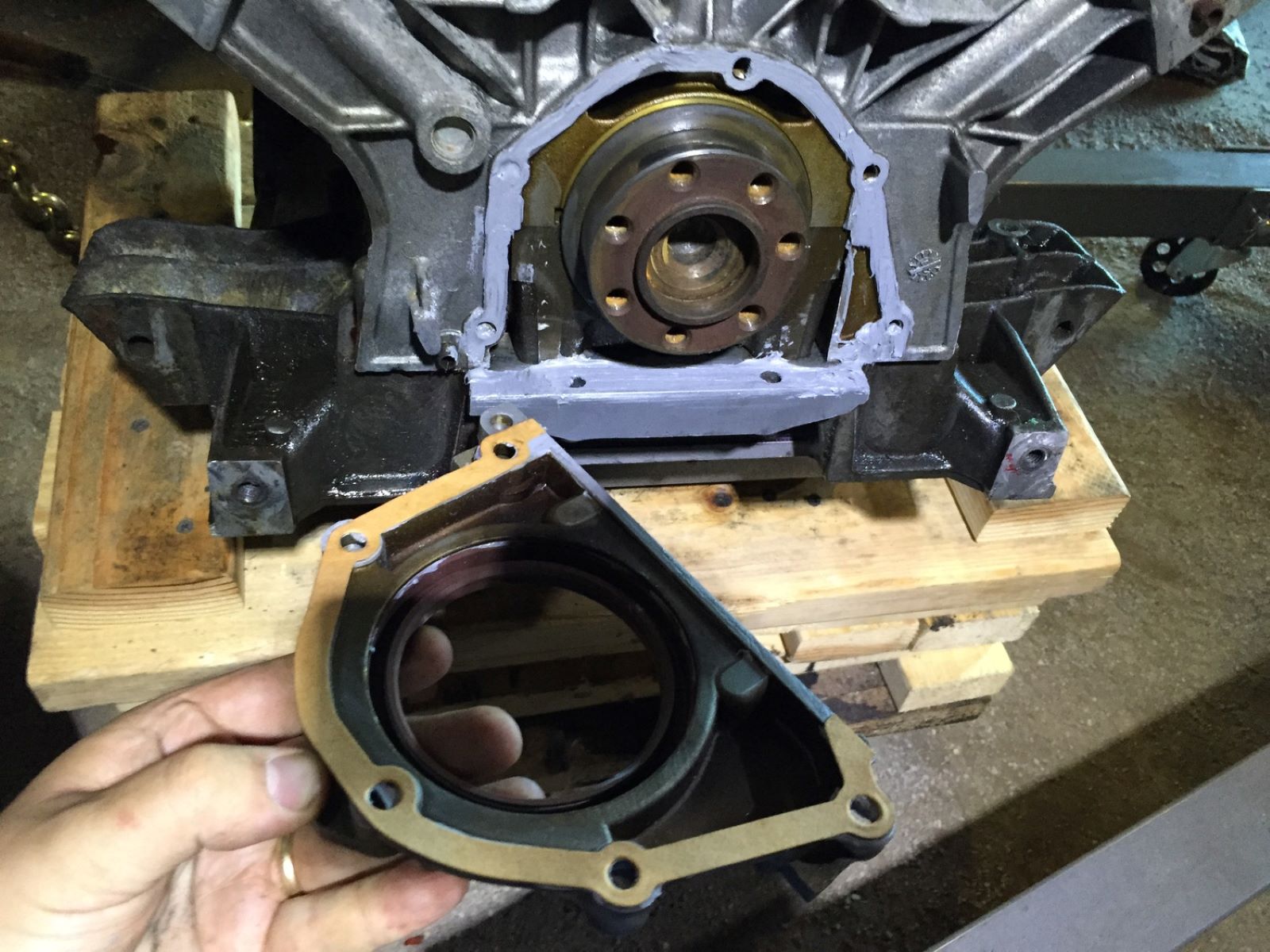Home>Automotive>Quick And Easy Exhaust Manifold Leak Fix!


Automotive
Quick And Easy Exhaust Manifold Leak Fix!
Published: January 10, 2024
Learn how to quickly and easily fix an exhaust manifold leak in your automotive vehicle with our step-by-step guide. Keep your car running smoothly!
(Many of the links in this article redirect to a specific reviewed product. Your purchase of these products through affiliate links helps to generate commission for Regretless.com, at no extra cost. Learn more)
Table of Contents
Introduction
Dealing with an exhaust manifold leak can be a frustrating and concerning issue for any vehicle owner. The unmistakable hissing or ticking sound coming from the engine compartment can quickly become a source of worry. However, with the right knowledge and tools, addressing this problem can be a quick and straightforward process.
In this comprehensive guide, you will learn how to identify and fix exhaust manifold leaks efficiently, saving both time and money. Whether you're a seasoned DIY enthusiast or a novice looking to tackle your first automotive repair, this step-by-step approach will empower you to resolve the issue with confidence.
Understanding the underlying causes of exhaust manifold leaks and the essential tools and materials needed for the repair will be covered in detail. Additionally, the guide will walk you through the process of identifying the leak, making necessary preparations, applying the fix, and conducting a thorough test to ensure the repair's success.
By following these practical steps, you'll not only address the bothersome exhaust manifold leak but also gain valuable insight into maintaining and servicing your vehicle. So, let's dive in and equip ourselves with the knowledge and skills needed to conquer this common automotive challenge.
Understanding Exhaust Manifold Leaks
Exhaust manifold leaks are a common issue in vehicles, often causing noticeable symptoms such as a hissing or ticking sound emanating from the engine compartment. These leaks occur when the gasket or the manifold itself develops cracks or holes, allowing exhaust gases to escape before they reach the catalytic converter. This not only leads to a decrease in engine performance but can also pose a potential safety hazard due to the release of harmful gases.
The primary cause of exhaust manifold leaks can be attributed to the intense heat cycles and constant expansion and contraction that the manifold endures during engine operation. Over time, this thermal stress can lead to the deterioration of the manifold gasket or the manifold itself, resulting in leaks. Additionally, corrosion, physical damage, or improper installation can also contribute to the development of leaks.
It's essential to recognize the signs of an exhaust manifold leak, as early detection can prevent further damage to the vehicle and mitigate safety risks. Apart from the audible hissing or ticking noise, other indicators include decreased engine performance, a noticeable exhaust smell inside the vehicle, and the potential illumination of the check engine light due to the altered oxygen sensor readings.
Understanding the implications of exhaust manifold leaks underscores the importance of addressing this issue promptly. Neglecting a leak can lead to reduced fuel efficiency, engine misfires, and potential damage to other components in the vehicle's exhaust system. Moreover, the release of exhaust gases into the engine bay can compromise the safety and well-being of the vehicle occupants, making timely repair a critical priority.
By gaining insight into the causes and symptoms of exhaust manifold leaks, vehicle owners can take proactive measures to diagnose and remedy the issue effectively. This understanding sets the stage for the subsequent steps involved in identifying, preparing for, and executing the repair, ensuring a comprehensive and successful resolution to the problem.
Tools and Materials Needed
To embark on the journey of fixing an exhaust manifold leak, it's crucial to gather the essential tools and materials that will facilitate a smooth and effective repair process. Equipping yourself with the right items ensures that you can address the issue comprehensively, without encountering unnecessary setbacks. Here's a comprehensive list of tools and materials needed to tackle the exhaust manifold leak fix:
Tools:
- Socket Set: A quality socket set with various metric and standard sizes is indispensable for loosening and tightening the manifold bolts securely.
- Ratchet and Extensions: These tools enable access to hard-to-reach areas, allowing for efficient maneuvering during the repair process.
- Torque Wrench: Essential for tightening the manifold bolts to the manufacturer's specified torque, promoting a secure and reliable seal.
- Pry Bar: Useful for gently prying the manifold away from the cylinder head, aiding in the removal and reinstallation process.
- Gasket Scraper: Required for meticulously removing the old gasket material from the mating surfaces, ensuring a clean and smooth sealing area.
- Safety Equipment: It's vital to prioritize safety by using protective gear such as gloves, safety goggles, and a face mask to shield against harmful fumes and debris.
Materials:
- Exhaust Manifold Gasket: Acquire a high-quality replacement gasket designed for your specific vehicle make and model to ensure a proper fit and optimal performance.
- Threadlocker: Utilize threadlocker to secure the manifold bolts, preventing potential loosening due to engine vibrations and thermal cycling.
- High-Temperature Gasket Sealant: A reliable high-temperature sealant is essential for reinforcing the seal between the manifold and the cylinder head, effectively preventing leaks.
- Penetrating Oil: This facilitates the removal of stubborn or rusted manifold bolts, easing the disassembly process and minimizing the risk of damaging components.
- Shop Rags: Keep an ample supply of clean shop rags on hand to wipe away excess sealant, oil, and debris, ensuring a tidy work environment.
- Cleaning Solvent: Use a suitable cleaning solvent to thoroughly clean the manifold and cylinder head mating surfaces before installing the new gasket, promoting a secure and durable seal.
By assembling these tools and materials, you'll be well-prepared to address the exhaust manifold leak efficiently and effectively. This comprehensive selection empowers you to navigate the repair process with confidence, ensuring that you have everything necessary to achieve a successful outcome. With the tools and materials in hand, you're ready to move on to the next crucial steps of identifying the leak and making necessary preparations for the repair.
Step 1: Identifying the Leak
The first step in addressing an exhaust manifold leak is to accurately identify its location. This process requires a systematic approach to pinpoint the source of the leak and assess its severity. Here's a detailed breakdown of the steps involved in identifying the leak:
-
Visual Inspection: Begin by visually examining the area around the exhaust manifold. Look for any signs of black soot or carbon deposits, which can indicate a leak. Pay close attention to the manifold gasket and the connection points between the manifold and the cylinder head.
-
Listening for Hissing or Ticking Sounds: With the engine running, listen for any hissing or ticking sounds emanating from the engine compartment. These audible cues often point to the presence of an exhaust manifold leak. Use a mechanic's stethoscope or a length of hose to help isolate the source of the sound.
-
Feeling for Exhaust Gas Escaping: Carefully run your hand around the manifold gasket and connection points while the engine is running. Be cautious of hot surfaces. If you feel puffs of exhaust gas or detect hot air escaping from a specific area, it indicates a leak at that point.
-
Inspecting for Exhaust Smell: A distinct exhaust odor inside the vehicle or around the engine bay can be a telltale sign of an exhaust manifold leak. Take note of any unusual smells and their location to narrow down the potential leak area.
-
Utilizing Smoke Test: If the leak is challenging to identify through visual and auditory inspection, a smoke test can be employed. This involves introducing smoke into the exhaust system and observing where it escapes. Professional smoke testing equipment or DIY methods using a smoke machine can aid in precisely locating the leak.
-
Examining O2 Sensor Readings: If you have access to an OBD-II scanner, monitor the real-time data, particularly the oxygen sensor readings. An exhaust manifold leak can cause irregular oxygen sensor readings, providing valuable diagnostic information to confirm the presence and location of the leak.
By meticulously carrying out these steps, you'll be equipped with a clear understanding of the location and severity of the exhaust manifold leak. This precise identification serves as a foundational element in preparing for the subsequent repair steps, ensuring that the fix is targeted and effective. With the leak identified, you're ready to move on to the crucial stage of making necessary preparations for the repair.
Step 2: Preparation
With the exhaust manifold leak accurately identified, thorough preparation becomes paramount to ensure a successful repair process. The following steps outline the essential preparations required before proceeding with the fix:
-
Safety First: Prioritize safety by allowing the engine to cool down completely before initiating any work on the exhaust manifold. The high temperatures involved can pose burn risks, making it crucial to exercise caution and utilize appropriate safety gear such as gloves and eye protection.
-
Gather Tools and Materials: Confirm that all the necessary tools and materials, as outlined in the previous section, are readily accessible. Having everything at hand minimizes interruptions during the repair and facilitates a streamlined workflow.
-
Secure Work Area: Position the vehicle in a well-ventilated and adequately lit workspace. Ensure that the surroundings are free from clutter and obstructions, allowing ample room to maneuver around the engine compartment.
-
Disconnect Battery: As a precautionary measure, disconnect the vehicle's battery to prevent any electrical mishaps during the repair process. This step mitigates the risk of accidental short circuits and electrical hazards.
-
Exhaust System Inspection: Conduct a brief inspection of the entire exhaust system, including the manifold, downstream components, and hangers. This assessment helps identify any additional issues or potential damage that may require attention during the repair.
-
Manifold Bolt Accessibility: Evaluate the accessibility of the manifold bolts, ensuring that there is sufficient clearance to maneuver the tools effectively. If necessary, use penetrating oil to lubricate and loosen any stubborn or rusted bolts, allowing for easier disassembly.
-
Clean Mating Surfaces: Thoroughly clean the mating surfaces of both the exhaust manifold and the cylinder head using a suitable cleaning solvent. Removing any residual gasket material, debris, or oil residue ensures a smooth and secure seal for the new gasket.
-
Review Repair Procedure: Familiarize yourself with the specific repair procedure outlined in the vehicle's service manual or reputable online resources. Understanding the manufacturer's recommended steps and torque specifications is crucial for a precise and effective repair.
By diligently completing these preparatory steps, you establish a solid foundation for the subsequent repair process. This meticulous preparation not only streamlines the repair workflow but also contributes to the overall quality and durability of the fix. With the groundwork laid, you're now poised to proceed with the application of the fix to address the exhaust manifold leak comprehensively.
Step 3: Applying the Fix
With the exhaust manifold leak identified and necessary preparations completed, it's time to embark on the crucial stage of applying the fix. This step-by-step process involves meticulous attention to detail and precision to ensure a durable and effective repair. Here's a comprehensive breakdown of the actions involved in applying the fix:
-
Manifold Removal: Begin by carefully removing the fasteners securing the exhaust manifold to the cylinder head. Utilize the appropriate socket and ratchet to loosen and remove the bolts, taking care not to damage the surrounding components. Once the fasteners are removed, gently detach the manifold from the cylinder head, ensuring a controlled and steady maneuver to prevent any undue stress on the exhaust system.
-
Gasket Inspection: Upon removing the manifold, thoroughly inspect the old gasket for signs of damage, wear, or deterioration. Ensure that all remnants of the previous gasket are removed from the mating surfaces of both the manifold and the cylinder head using a gasket scraper and cleaning solvent. The mating surfaces must be clean, dry, and free from any debris to facilitate a secure seal with the new gasket.
-
Gasket Replacement: Carefully position the new exhaust manifold gasket onto the cylinder head, aligning it with the corresponding bolt holes. Take note of any specific orientation or alignment requirements specified by the gasket manufacturer. The use of a high-temperature gasket sealant on both sides of the gasket can further reinforce the seal and prevent potential leaks.
-
Manifold Installation: Reattach the exhaust manifold to the cylinder head, aligning it with the new gasket and ensuring a snug fit. Begin threading and tightening the manifold bolts by hand to secure the manifold in place. Subsequently, utilize a torque wrench to tighten the bolts to the manufacturer's specified torque settings in a crisscross pattern, promoting even pressure distribution and a reliable seal.
-
Threadlocker Application: Apply a high-quality threadlocker to the manifold bolts before tightening them. This step enhances the security of the fasteners, preventing potential loosening due to engine vibrations and thermal cycling. The threadlocker ensures that the bolts remain securely in place, contributing to the longevity of the repair.
-
Final Inspection: Once the manifold is securely reinstalled and the fasteners are properly torqued, conduct a thorough visual inspection to verify the integrity of the repair. Ensure that all components are properly aligned and that there are no gaps or misalignments. Confirm that the gasket is seated securely and that there are no indications of leaks or irregularities.
By meticulously following these steps, you'll effectively apply the fix to address the exhaust manifold leak, promoting enhanced engine performance and safety. This meticulous approach ensures a durable and reliable repair, setting the stage for the subsequent testing of the repair to validate its effectiveness.
Step 4: Testing the Repair
After applying the fix to address the exhaust manifold leak, thorough testing is essential to validate the effectiveness of the repair and ensure that the issue has been comprehensively resolved. The testing phase serves as a critical checkpoint, allowing you to confirm that the repair has successfully mitigated the leak and restored optimal functionality to the vehicle's exhaust system.
The following steps outline the systematic approach to testing the repair and verifying its integrity:
-
Visual Inspection: Begin the testing process with a visual inspection of the reinstalled exhaust manifold and the surrounding components. Look for any signs of exhaust residue, soot, or discoloration around the manifold gasket and connection points. A lack of visible exhaust traces indicates a successful seal and signifies that the repair has effectively addressed the leak.
-
Exhaust Sound and Smell: Start the engine and carefully listen for any hissing, ticking, or unusual exhaust sounds that were previously indicative of the leak. Additionally, pay attention to any lingering exhaust odors inside and outside the vehicle. The absence of abnormal sounds and smells confirms that the repair has rectified the leak, restoring the exhaust system's integrity.
-
Engine Performance: Take the vehicle for a brief test drive, monitoring the engine's performance and responsiveness. Accelerate and decelerate to assess the engine's smoothness and power delivery. Any prior symptoms of decreased engine performance or hesitation resulting from the leak should be noticeably improved or completely resolved, affirming the success of the repair.
-
Oxygen Sensor Readings: If feasible, utilize an OBD-II scanner to monitor the real-time data from the vehicle's oxygen sensors. Compare the post-repair oxygen sensor readings with the pre-repair values, looking for consistent and stable sensor outputs. The absence of erratic sensor readings indicates that the exhaust manifold leak has been effectively addressed, restoring accurate oxygen sensor functionality.
-
Visual and Auditory Confirmation: Once the initial testing is complete, perform a final visual and auditory confirmation. Inspect the exhaust manifold and its connections for any signs of leaks or abnormalities. Listen for any unusual sounds emanating from the engine compartment, ensuring that the repair has effectively resolved the previously identified leak.
By methodically conducting these testing procedures, you can confidently affirm the success of the repair and the comprehensive resolution of the exhaust manifold leak. This rigorous testing phase provides assurance that the vehicle's exhaust system has been restored to optimal condition, allowing you to proceed with confidence and peace of mind.
Conclusion
In conclusion, addressing an exhaust manifold leak is an achievable endeavor that empowers vehicle owners to restore optimal performance and safety to their vehicles. By understanding the causes and symptoms of exhaust manifold leaks, individuals can proactively identify and resolve this common automotive issue. The systematic approach outlined in this guide equips both seasoned DIY enthusiasts and novice automotive enthusiasts with the knowledge and skills needed to tackle the repair process confidently.
From the initial identification of the leak to the meticulous preparation and application of the fix, each step plays a pivotal role in ensuring a durable and effective repair. The comprehensive understanding of exhaust manifold leaks, coupled with the utilization of essential tools and materials, sets the stage for a successful resolution. By following the step-by-step process, individuals can navigate the repair with precision and thoroughness, ultimately achieving a reliable seal and restoring the integrity of the exhaust system.
Furthermore, the emphasis on safety measures and thorough testing underscores the commitment to quality and long-term reliability. Prioritizing safety throughout the repair process, from allowing the engine to cool down completely to utilizing protective gear, reinforces a responsible and conscientious approach to automotive maintenance and repair.
Ultimately, the successful repair of an exhaust manifold leak not only alleviates the bothersome symptoms associated with the issue but also contributes to enhanced engine performance, fuel efficiency, and overall vehicle safety. Through the systematic execution of the repair process and the comprehensive testing to validate the fix, individuals can gain confidence in their ability to address this common automotive challenge.
By empowering vehicle owners with the knowledge and skills needed to address exhaust manifold leaks, this guide fosters a sense of self-reliance and capability in maintaining and servicing their vehicles. The ability to identify, prepare for, and execute a repair of this nature not only saves time and money but also cultivates a deeper understanding of automotive systems and components.
In essence, the journey of addressing an exhaust manifold leak serves as a testament to the resilience and resourcefulness of vehicle owners, highlighting the rewarding nature of DIY automotive maintenance and repair. With the completion of the repair and the restoration of optimal functionality to the exhaust system, individuals can take pride in their accomplishment and embark on future automotive endeavors with newfound confidence and proficiency.













